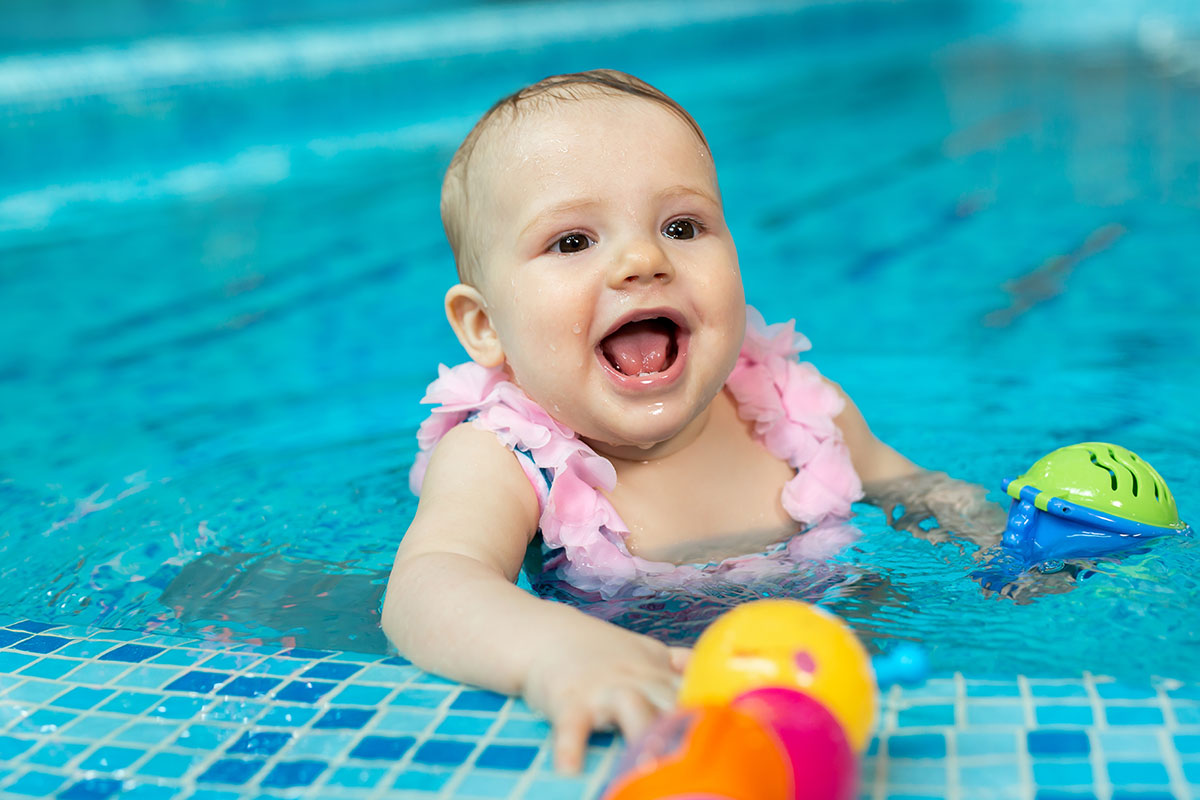
Swimming is great fun for babies and has many benefits for their development. However, visiting a pool with an infant requires caution and proper preparation. In this article, we'll provide tips on how to safely start your child's swimming adventure.
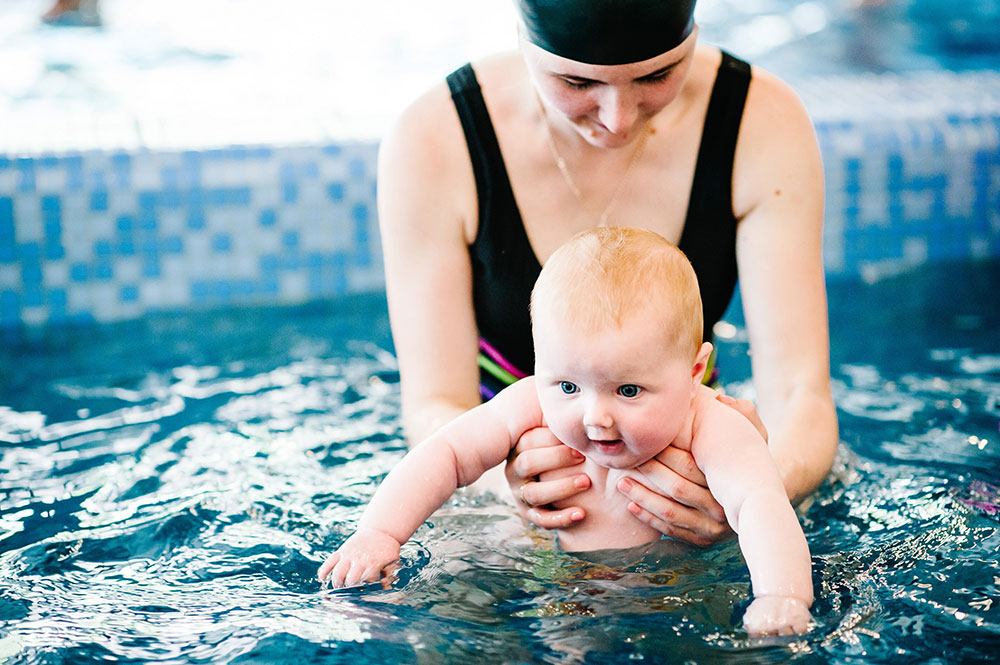
Baby in the pool - is it worth going to the pool?
Playing in a pool can have many positive effects on a baby, both in terms of physical and emotional development, including:
- Improving physical fitness – water play is an excellent form of physical activity that promotes the development of motor skills and muscle strength. In water, thanks to the reduced weight, babies can move their limbs freely, which contributes to the development of motor skills.
- Strengthens the immune system - swimming is a good way to oxygenate and harden the body, which can help immunize the child's body against colds.
- Sensory stimulation – Water is a rich source of sensory stimuli that stimulate a child's senses. Contact with water helps stimulate the nervous system, contributing to the development of balance, motor coordination, and spatial perception.
- Strengthens the bond between parents and child - swimming with a baby is also a great opportunity to spend time with the child and strengthen the bond between parents and child.
- Improves sleep and appetite - Swimming is a form of physical activity that can help regulate sleep and improve appetite in infants.
- We teach children water habits – babies who learn to swim from a young age have a greater chance of becoming good swimmers in the future. Furthermore, swimming from a young age helps shape good hygiene and health habits.
- Helps with cognitive development - swimming classes are a great opportunity to explore new stimuli and develop your child's cognitive skills by observing their surroundings and interacting with other children and adults.
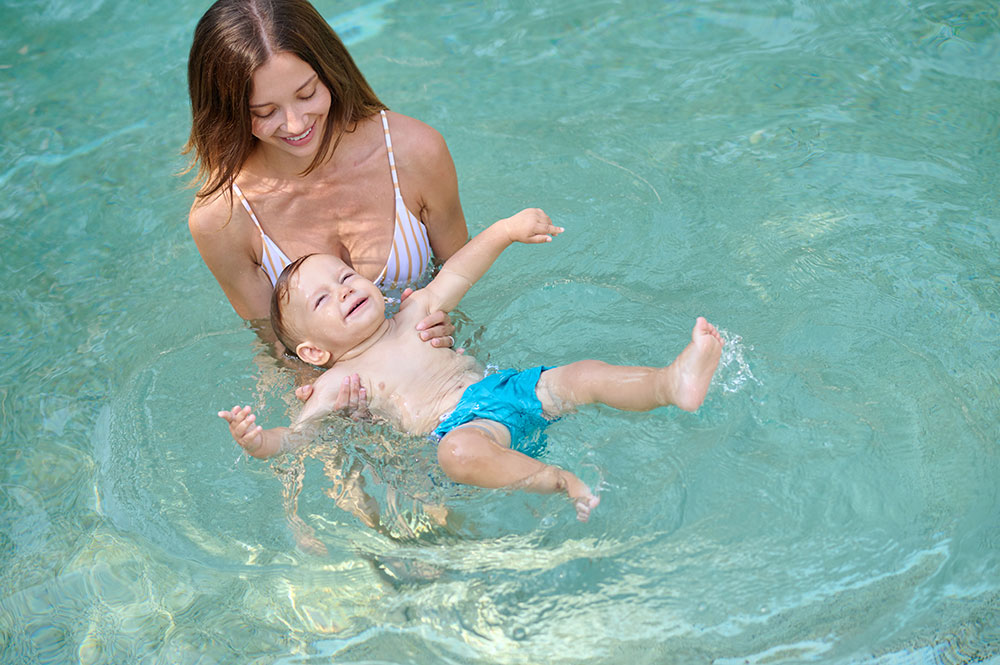
Why is it worth starting to teach babies to swim?
Babies have a natural aptitude for swimming, stemming from the nine months they spend developing in an aquatic environment in the womb. As a result, their reflexes and reactions to water are more developed than those of older children and adults.
From the very first moments after birth, infants are able to hold their breath underwater, an important reflex that protects against choking during bath time. Infants also have natural motor reflexes, such as the butterfly stroke, that allow them to propel themselves through water. During the first months of a baby's life, these natural predispositions should be developed through regular contact with water and pool play . This helps the child develop motor skills and gain confidence in the water. However, it is crucial that the entire swimming learning process is conducted safely and supervised by qualified instructors. It is also important to remember that every child is different and requires an individual approach regarding the intensity and method of swimming training.
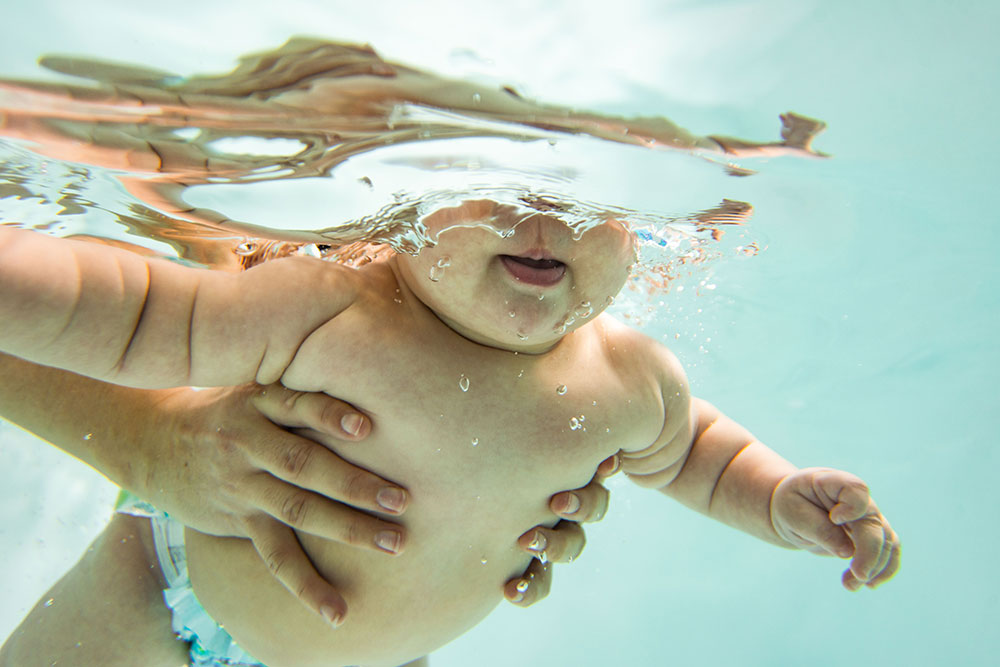
It is easier for babies to learn to swim than older children due to several factors:
-
A natural tendency to move in water
Babies have a natural affinity for water movement because they spend nine months in the womb surrounded by amniotic fluid. This gives them a natural desire to move in water, which facilitates the process of learning to swim. - Tonic-cervical reflex
Infants have a tonic-neck reflex, which involves straightening their arms and legs when their head is tilted back. This reflex allows the infant to more easily keep their head above water and limb movements become more coordinated. - No fear of water
Infants haven't yet developed a sense of self-awareness, which helps them avoid the fear of water that often develops in older children. This allows them to freely explore the water and enjoy playing, facilitating the process of learning to swim. - Body awareness
Infants are more aware of their bodies than older children. This allows them to more easily control their movements and better feel their bodies in the water, which contributes to the development of motor coordination. - No negative experiences
Infants haven't yet had negative experiences with water, such as injuries or unpleasant sensations. Therefore, they have a positive relationship with water and are more likely to participate in pool play.
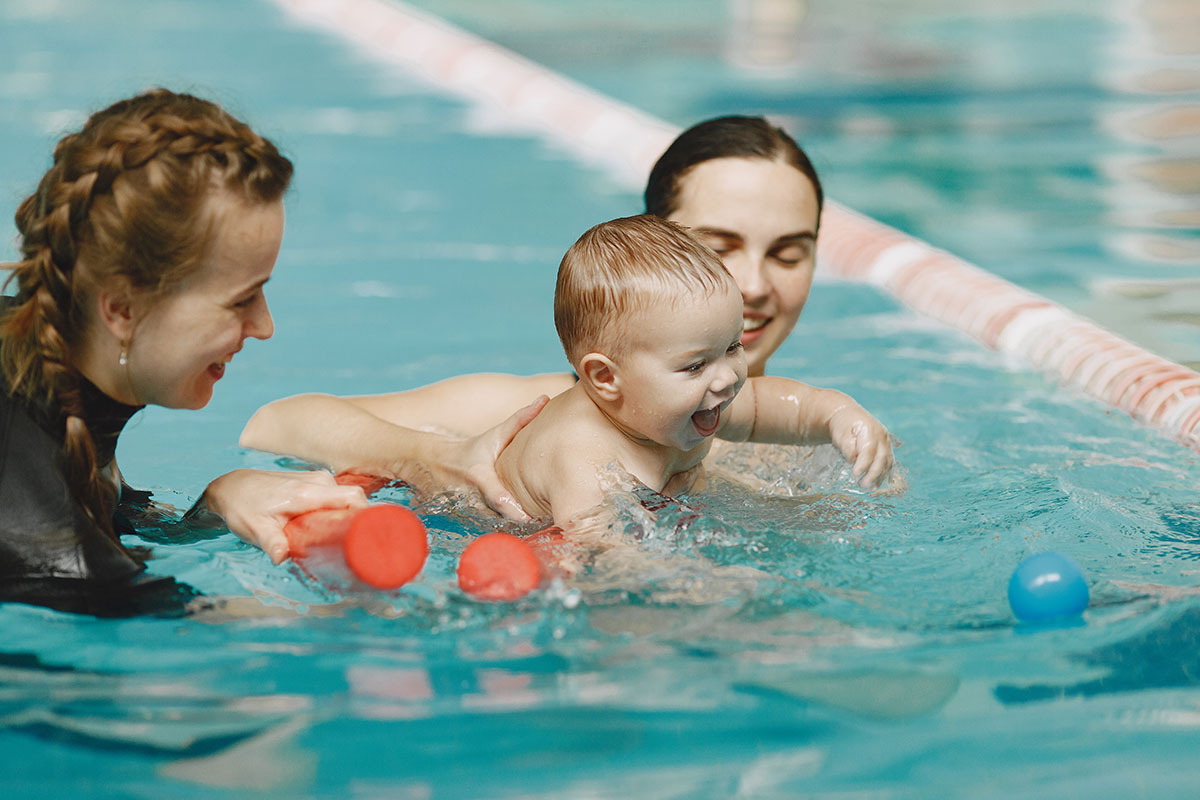
What to do with a baby at the pool?
Infant swimming lessons are a great opportunity for parents to spend time in the water with their child and teach them the basics of swimming. These lessons offer many benefits for both the child and the parents.
Infant swimming lessons typically take place in specially adapted pools, where the water temperature is adjusted to the needs of young children. Lessons typically involve several parent-child pairs, and instructors guide children and parents through a series of simple exercises and water games. During infant swimming lessons, the primary focus is familiarizing children with water and increasing their comfort in this environment. Toddlers also learn how to keep their heads above water, how to breathe, and how to control their movements. Depending on the child's age, different swimming methods are used. For infants, learning to swim is primarily about having fun and getting them into their comfort zone. Swimming should be enjoyable for them, not a source of stress.
It's important that swimming lessons for infants are led by qualified instructors with experience working with very young children. The instructor should be able to create a friendly atmosphere that allows the child to easily become accustomed to the water.
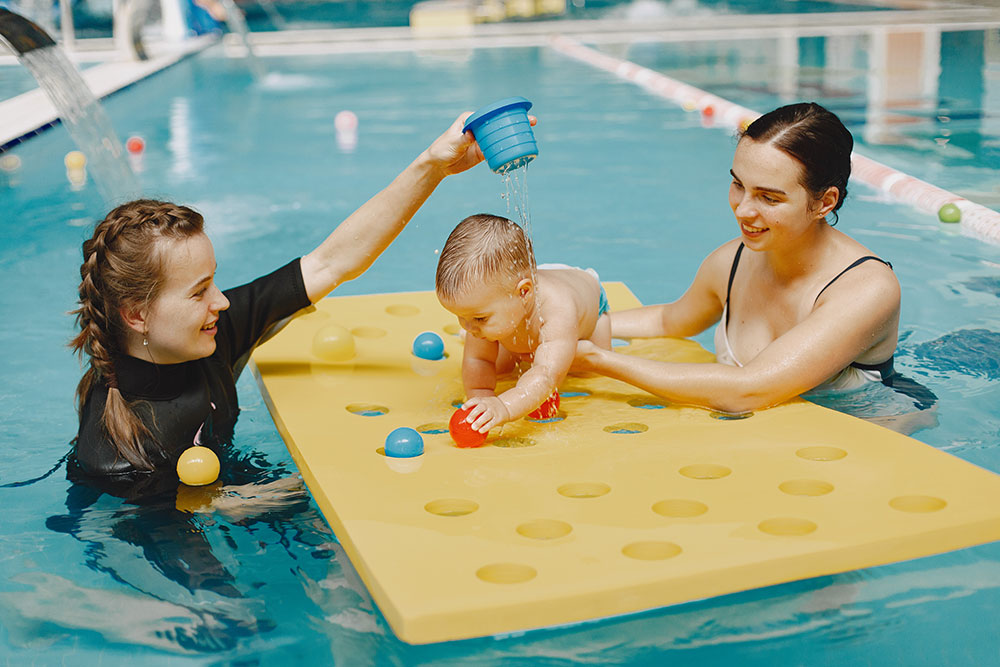
At what age can you start taking your baby to the swimming pool?
According to pediatrician recommendations , a child's first visit to the pool should occur around six months of age . Before this time, infants don't yet have the reflexes and motor skills necessary to safely be in the water. At around six months of age, a child gains some control over their movements and is able to stay afloat under parental supervision. However, it's important to remember that every child is different, and sometimes children start their swimming adventure earlier or later.
Before your baby's first visit to the pool, it's best to consult a pediatrician who will assess your child's development and readiness for this type of activity.
Introducing a child to water should be gradual. In the first stage, it's a good idea to show the child the water and allow them to touch it with their feet. In the next stage, the child should be gently lowered into the water, first to the waist, and then to the neck. It's important to ensure that the child feels safe and doesn't scream, which can negatively impact their perception of water. Parents can obtain all the tips on how to handle a baby in the pool from instructors at specialized infant swimming classes.
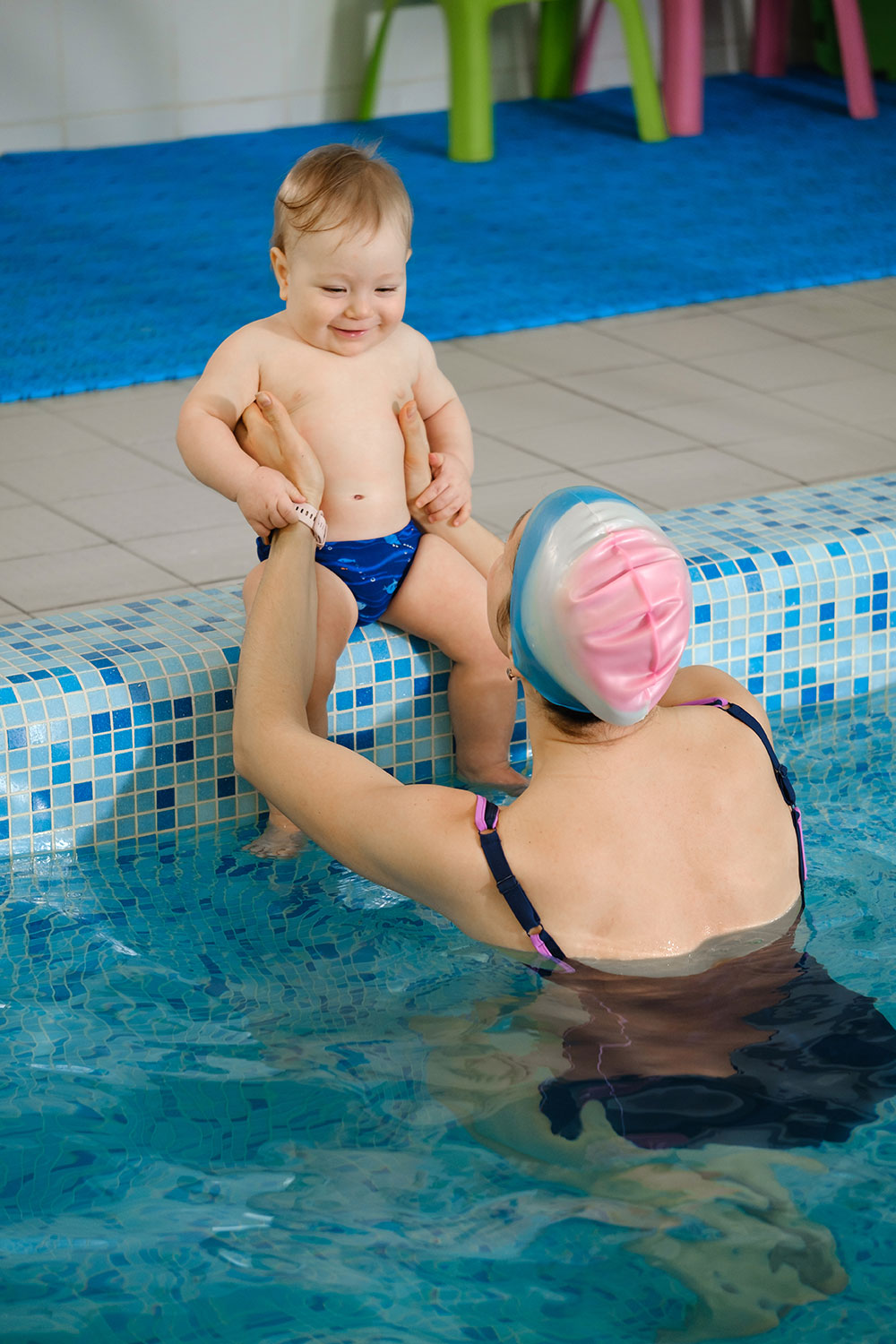
What to take with you to the baby pool
Preparing for a visit to the pool with a baby requires the right equipment. It's worth bringing not only the basics but also a few additional accessories that will help ensure your baby's safety and comfort while swimming. Below is a list of items worth bringing to the baby pool:- Swim diaper This is the basis of comfort in the pool for the baby and other pool users.
- Regular diapers Disposable or reusable diapers to change after swimming.
- Towels We take at least one towel, but we can take two towels with us, one for drying and the other for wrapping.
- Cosmetics Baby wash, shampoo, body lotion or oil, optional diaper rash cream.
- Sunscreen We take UV cream for our baby if we use outdoor pools in the summer.
- Water toys If the pool does not provide swimming aids, it is worth taking a small inflatable swimming mattress or foam board, which can be useful to give your little one a moment of rest in the water.
- Outerwear Your child can cool down quickly after getting out of the pool, so it's a good idea to bring warm clothes.
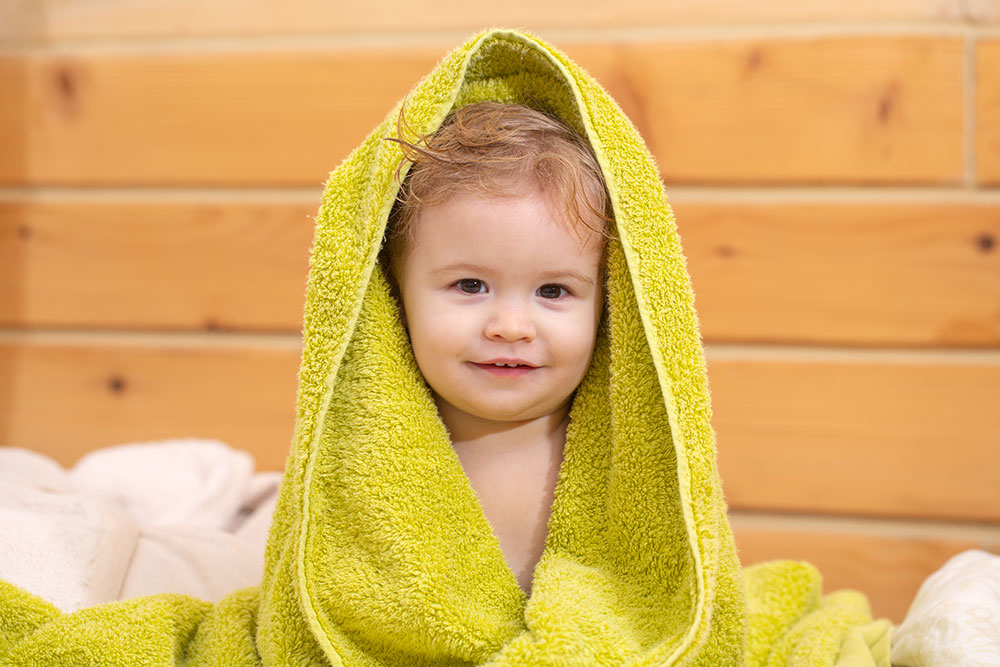
How to keep your child safe and comfortable at the pool
Child safety in the pool is crucial. Above all, it's crucial to ensure constant parental supervision, ensuring the child is in the water and in close proximity to the parent . It's also important to remember that infants tire very quickly in the water, so swimming sessions shouldn't last longer than 15-20 minutes . Before visiting the pool, it's also worth learning basic rescue techniques so you can quickly and effectively provide assistance to your child or others if necessary.
To ensure your child feels comfortable in the pool, it's important to ensure the appropriate water temperature and hygiene . The pool should be clean and properly equipped with water disinfection equipment. Choose shallower pools designed for family recreation. This will not only prevent collisions with other swimmers, but also provide your child with warmer water tailored to their needs.

What to do with a baby at the pool
For babies, swimming is primarily a fun activity that develops their senses and motor skills. Therefore, it's important to ensure that your child has the opportunity to move freely in the water, for example, with water toys like balls or inflatable animals . Of course, parents should always monitor their baby's safety. You can also play with your baby by gently splashing water or gently pouring it on their head – simple water play can bring your little one a lot of joy.
In the pool, you can also teach your child to perform simple exercises, such as flapping their arms or legs, or floating vertically in the water or on their back.
Swimming is also a great opportunity to spend time with your child and strengthen family bonds. Even standing in a warm pool cuddling your little one will be an interesting water adventure and the joy of spending time with a parent.
What to do with a baby after leaving the pool?
After leaving the pool, the first priority should be ensuring your child's thermal comfort. Your little one can get cold, so quickly cover them with a towel and remove the wet diaper. Then, it's a good idea to wash them from the pool water. Use gentle baby skincare products, and after washing, ensure proper skin care with a cream or oil. Regardless of the season, your child may feel cold after a swim. Wrap your little one in a towel and dress them in comfortable cotton clothing to keep them warm . After returning home, wash any toys used at the pool and put the towels in the laundry.
In this article we discussed aspects such as:
- babies in the pool
- swimming lessons for babies
- benefits of swimming for babies
- a baby's natural predisposition to swimming
- baby swimming costume
- baby pool
- baby hygiene at the pool
- baby safety at the pool
- parents with a baby at the pool
- swimming classes for babies.
Taking your baby to the pool can be a wonderful opportunity to spend time with your child, strengthen family bonds, and develop their motor skills and senses. However, it's important to remember to prepare properly and exercise caution while at the pool. Child safety should always come first, so it's important to ensure constant parental supervision and prior consultation with a doctor. It's best to start swimming lessons under the supervision of a qualified instructor.


Podziel się:
Autumn essentials for boys - Style and comfort in Endo clothes
Autumn essentials for boys - Style and comfort in Endo clothes